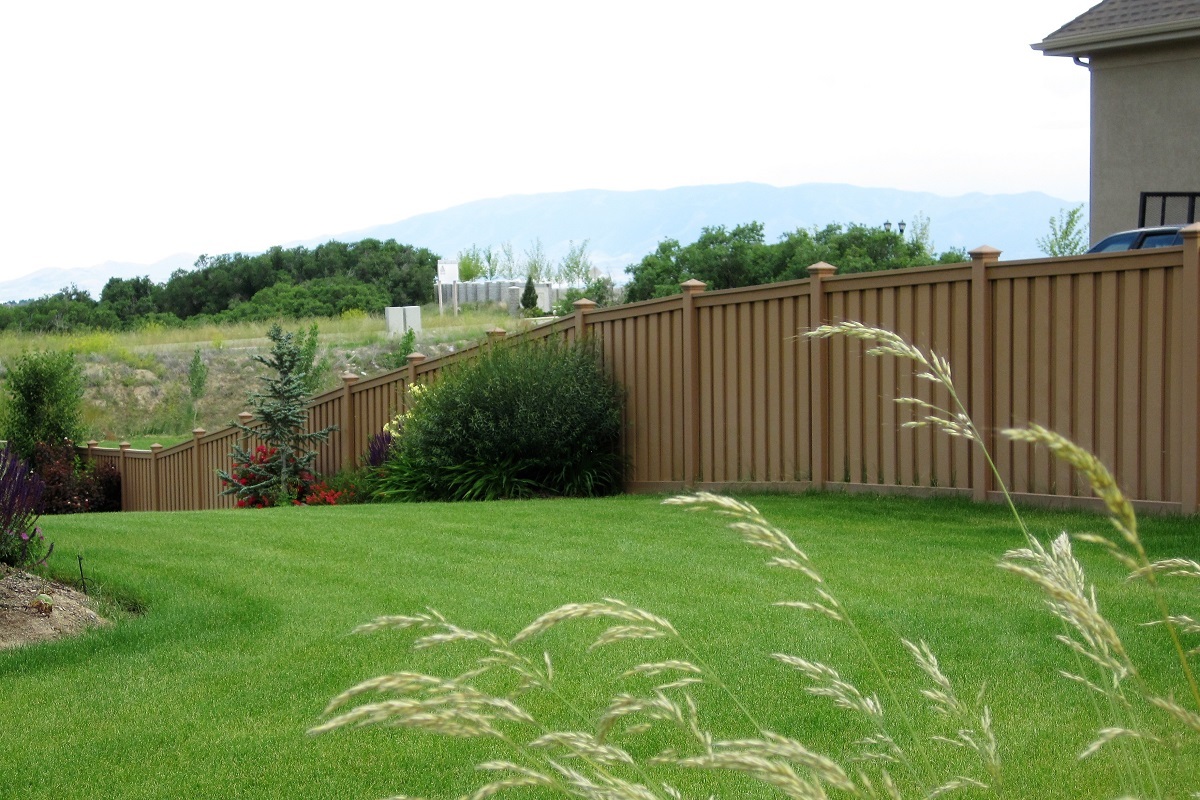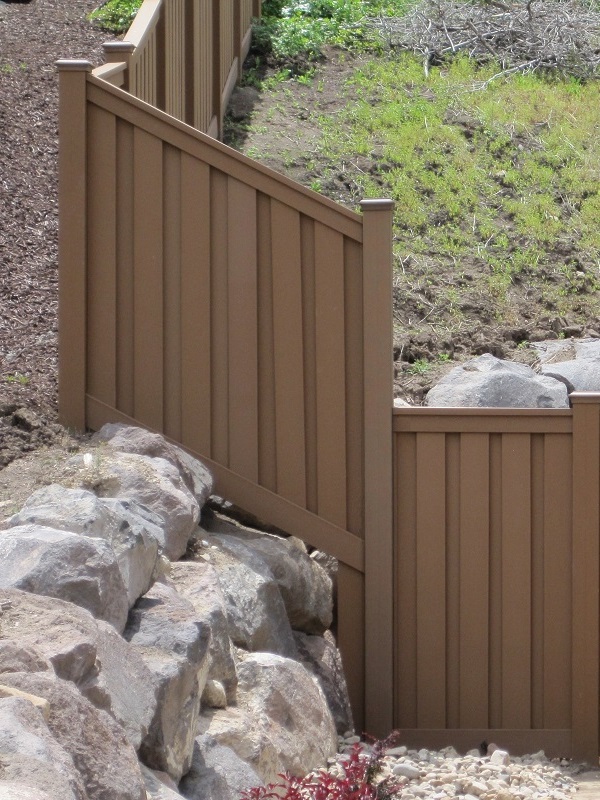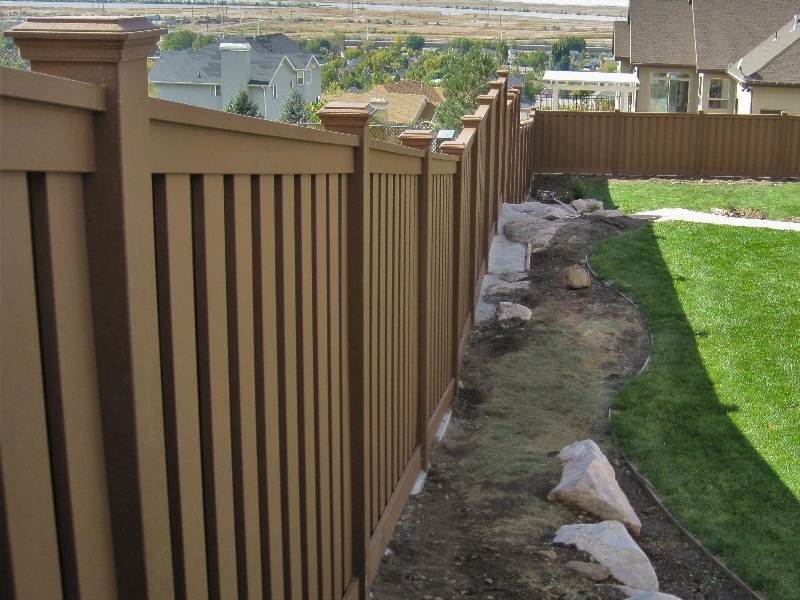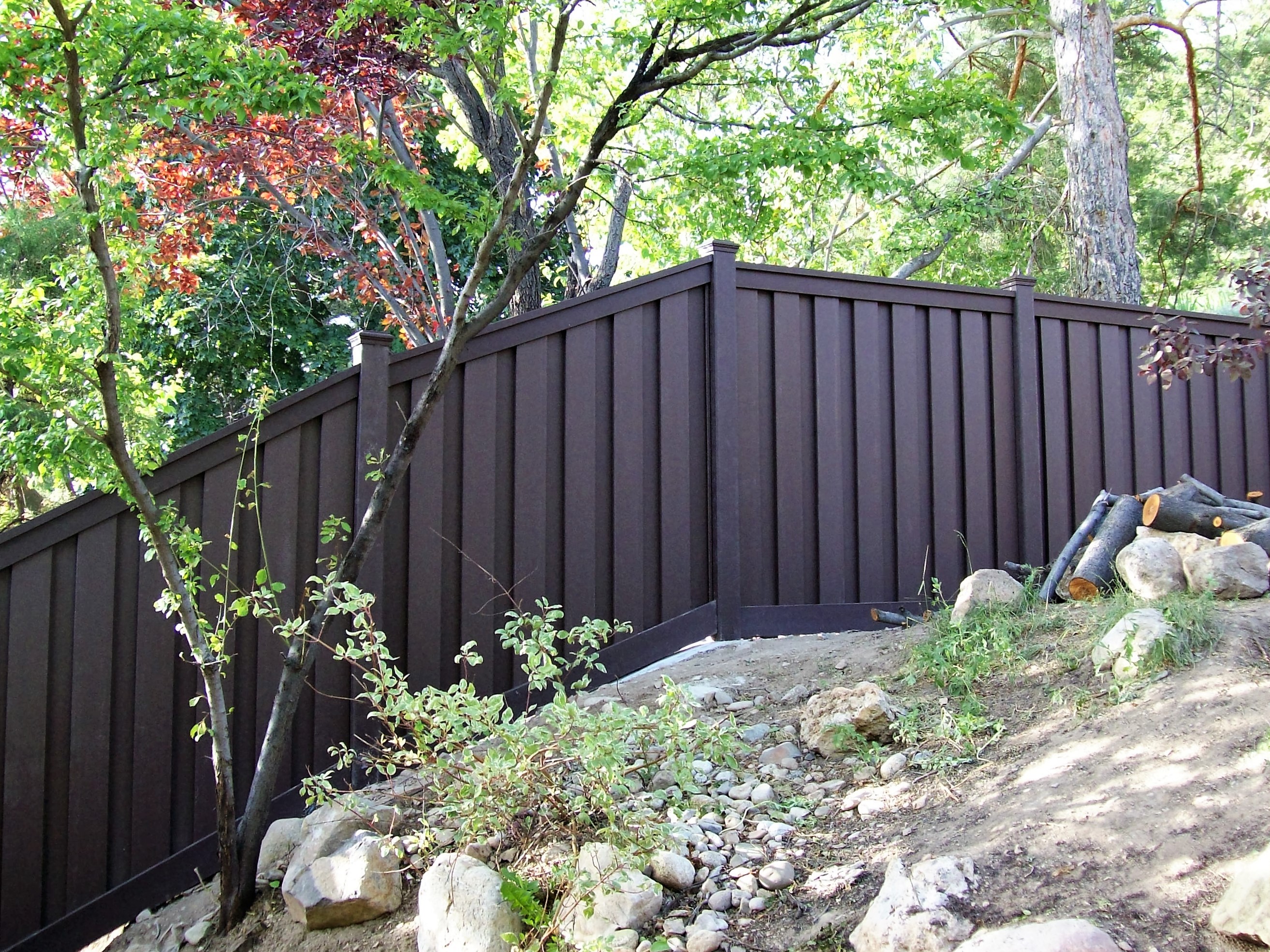Adjusting your fence to follow changes in terrain is easy with Trex fencing

 A commonly asked question with fencing is “How do I deal with slopes on my property?” Some fences are made from pre-fabricated panels which limit the ability follow the contours of the ground. This can cause problems with containment or exclusion (such as needing to keep pets in a yard or preventing other animals from entering it), and it will affect privacy.
A commonly asked question with fencing is “How do I deal with slopes on my property?” Some fences are made from pre-fabricated panels which limit the ability follow the contours of the ground. This can cause problems with containment or exclusion (such as needing to keep pets in a yard or preventing other animals from entering it), and it will affect privacy.
The Trex fencing design accommodates variances in terrain quite easily. As a “stick-built” system (meaning the unassembled components are put together as the fence is being built), the fence line can be adjusted as required for a particular area. Sloping (also known as “racking” or “raking”) is simple with Trex. Fence brackets provide significant tolerance for up-and-down angles, and angle adapters allow for easy adjustability side-to-side.
A consideration for an extreme slope is the length of a post. Although an 8′ or 9′ Trex post is typically sufficient, if the ground drops significantly, sometimes a longer post is necessary to create a stable footer or to get a desired fence height. Trex offers 12′ long posts that will help in these situations. Additionally, since a Trex fence can be built up to 12′ tall, you could maintain a level top line. For example, if your property slopes by a foot or two in an area, you can use longer pickets, cut them individually to the needed length, and slope the bottom line without disrupting the top of the fence.
For guidance on determining post-spacing when applying an up-and-down angle, use this Slope Calculator. If you need to adjust your fence line left and right, our next post will discuss angle adaptors. For information on how to attach brackets and angle adapters, see the Installation Guide.


